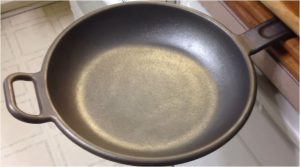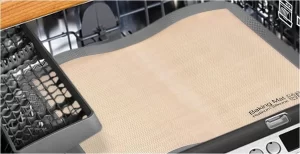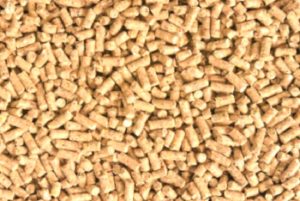Does Breathing In Steam Help A Stuffy Nose
Breathing in steam is an effective remedy for a stuffy nose. Steam can help alleviate nasal congestion and provide relief from a blocked nose, especially at night. When you inhale steam, it helps to moisturize the nasal passages, reducing inflammation and promoting easier breathing.
Steam therapy is not only beneficial for a stuffy nose but also for a cold. The warm, moist air can help soothe irritated nasal tissues and loosen mucus, making it easier to expel. This can provide temporary relief from cold symptoms and promote a faster recovery.
The duration of steam inhalation for congestion relief varies from person to person. It is generally recommended to inhale steam for about 10-15 minutes, allowing enough time for the steam to work its magic on the nasal passages. Exercise caution and avoid excessive exposure to steam, as it can lead to skin burns or discomfort.
For those experiencing a blocked nose specifically at night, there are several treatments available. Nasal decongestant sprays or saline nasal rinses can help clear the nasal passages and provide temporary relief. Elevating the head while sleeping can also help reduce nasal congestion and promote better airflow.
Steam therapy, there are other natural remedies that can help reduce a stuffy nose at night. These include using a humidifier in the bedroom, staying hydrated, avoiding irritants like smoke or strong odors, and trying nasal strips or nasal dilators to open up the nasal passages.
Can Steam Alleviate a Stuffy Nose?
Steam has long been recognized as a natural remedy for alleviating a stuffy nose. When you inhale steam, it can help to loosen mucus and reduce inflammation in the nasal passages, providing relief from congestion. The warm, moist air from the steam helps to soothe irritated nasal tissues and promote easier breathing.
1. Moisturizing Effect: Steam helps to moisturize the nasal passages, reducing dryness and inflammation. Dry air can cause the nasal tissues to become dry and irritated, leading to congestion. Inhaling steam adds moisture to the air, which helps to hydrate the nasal passages and alleviate congestion.
2. Mucus Thinning: Steam can help to thin out the mucus in the nasal passages, making it easier to expel. When mucus becomes thick and sticky, it can block the nasal passages and contribute to congestion. Inhaling steam helps to break down the mucus, allowing it to flow more freely and reducing congestion.
3. Nasal Tissue Relaxation: The warm, moist air from steam helps to relax the nasal tissues, reducing inflammation and promoting easier breathing. When the nasal tissues are relaxed, it can help to open up the nasal passages and alleviate congestion.
4. Sinus Pressure Relief: Steam therapy can also provide relief from sinus pressure associated with nasal congestion. The warm steam helps to soothe the sinus cavities, reducing inflammation and relieving pressure. This can provide immediate relief and improve overall comfort.
5. Temporary Relief: While steam therapy can provide temporary relief from nasal congestion, it is important to note that it may not address the underlying cause of the congestion. If you have chronic or persistent nasal congestion, it is advisable to consult a healthcare professional for a proper diagnosis and treatment plan.
Why Does Steam Provide Relief for Nasal Congestion?
Steam works by moisturizing and warming the nasal passages, which helps to loosen mucus and reduce inflammation. When you inhale steam, the warm moisture helps to thin the mucus in your nasal passages, making it easier to expel. This can provide immediate relief from congestion and make it easier to breathe.
Steam helps to soothe irritated nasal tissues. When you have a stuffy nose, the tissues in your nasal passages can become inflamed and swollen. The warm steam helps to reduce this inflammation, providing relief from the discomfort associated with congestion.
Moreover, steam can also help to clear out allergens and irritants from your nasal passages. When you inhale steam, it helps to flush out any particles that may be causing your congestion, providing further relief.
While steam can provide temporary relief for nasal congestion, it is not a cure for the underlying cause. If you are experiencing chronic or severe congestion, it’s best to consult a healthcare professional for a proper diagnosis and treatment plan.

How Long Should You Inhale Steam for Congestion Relief?
The duration of steam inhalation can vary depending on the severity of your congestion and personal preference. In general, it is recommended to inhale steam for about 10 to 15 minutes at a time. This allows enough time for the steam to work its magic on your nasal passages without causing any discomfort or irritation.
However, listen to your body and adjust the duration of steam inhalation accordingly. If you start to feel lightheaded or dizzy, it’s a sign that you may have inhaled steam for too long. In such cases, it’s best to take a break and allow your body to recover.
You can repeat steam inhalation sessions throughout the day as needed. If your congestion persists, you can inhale steam multiple times, with breaks in between, to maintain relief.
It’s worth noting that steam inhalation should be used as a complementary therapy and not as a standalone treatment. If your congestion persists or worsens despite steam inhalation, it’s important to seek medical advice for a proper diagnosis and appropriate treatment.
Steam Inhalation Side Effects on Nose
1. Steam inhalation is generally considered safe and effective for relieving nasal congestion. But prolonged exposure to steam can cause the nasal passages to become overly dry, leading to discomfort and irritation.
To prevent this, ensure that the steam is not too hot and take breaks during steam inhalation sessions.
2. Steam can cause burns if it is too hot or if you accidentally come into contact with the hot water or steam source. It’s crucial to exercise caution and maintain a safe distance from the steam source to avoid any accidents.
3. Some individuals may experience increased nasal congestion or sinus pressure after steam inhalation. This can occur if the steam causes the blood vessels in the nasal passages to dilate, leading to temporary congestion.
If this happens, taking a break from steam inhalation or using a saline nasal spray may help alleviate the symptoms.
4. Individuals with certain medical conditions, such as Chronic obstructive pulmonary disease (COPD), should exercise caution when using steam inhalation. The hot, moist air can potentially trigger respiratory symptoms in these individuals.
It’s advisable to consult a healthcare professional before incorporating steam inhalation into their congestion relief routine.
Read Also: Advantages and Disadvantages of Steaming Face
Natural Remedies for Nighttime Nasal Congestion: Unblock Your Nose
1. Humidify Your Bedroom
Using a humidifier in your bedroom can help add moisture to the air, preventing dryness in the nasal passages and reducing congestion. Optimal humidity levels can promote easier breathing and alleviate nighttime nasal congestion.
2. Elevate Your Head
Sleeping with your head slightly elevated can help reduce nasal congestion by allowing gravity to assist in draining the nasal passages. This can prevent mucus from pooling in the nasal cavities and alleviate congestion during sleep.
3. Nasal Irrigation
Nasal irrigation, using a saline solution or a neti pot, can help flush out excess mucus and allergens from the nasal passages. This can provide relief from congestion and promote clearer breathing, especially at night.
4. Steam Inhalation
Inhaling steam before bedtime can help moisturize the nasal passages and reduce congestion. The warm, moist air can soothe irritated nasal tissues and promote easier breathing, allowing you to sleep more comfortably.
5. Essential Oils
Certain essential oils, such as eucalyptus or peppermint oil, have decongestant properties and can help alleviate nasal congestion. You can use a diffuser or add a few drops of the oil to a warm bath or a tissue placed near your pillow to experience the benefits.
Read Also: What Are The Benefits Of A Steam Sauna And Steam Room?





